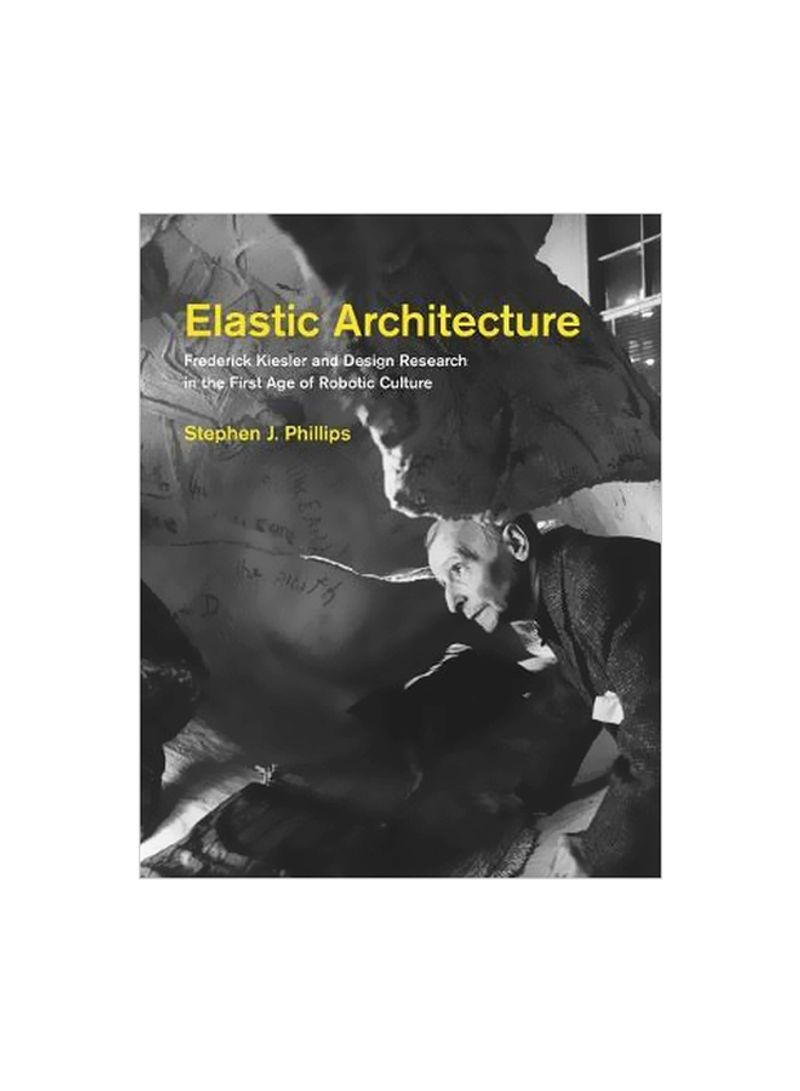Elastic Architecture : Frederick Kiesler And Design Research In The First Age Of Robotic Culture Hardcover
Recommend
Sort by
Rating
Date
Specifications
Author 1
Stephen J. Phillips
Book Description
Twentieth-century architect Frederick Kiesler's innovative multidisciplinary practice responded to the ever-changing needs of the body in motion, anticipating the research-oriented practices of contemporary art and architecture. In 1960, the renowned architect Philip Johnson championed Frederick Kiesler, calling him "the greatest non-building architect of our time." Kiesler's ideas were difficult to construct, but as Johnson believed, "enormous" and "profound." Kiesler (1890-1965) went against the grain of the accepted modern style, rejecting rectilinear glass and steel in favor of more organic forms and flexible structures that could respond to the ever-changing needs of the body in motion. In Elastic Architecture, Stephen Phillips offers the first in-depth exploration of Kiesler's innovative and multidisciplinary research and design practice. Phillips argues that Kiesler established a new career trajectory for architects not as master builders, but as research practitioners whose innovative means and methods could advance alternative and speculative architecture. Indeed, Kiesler's own career was the ultimate uncompromising model of a research-based practice. Exploring Kiesler's formative relationships with the European avant-garde, Phillips shows how Kiesler found inspiration in the plastic arts, experimental theater, early animation, and automatons to develop and refine his spatial concept of the Endless. Moving from Europe to New York in the 1920s, Kiesler applied these radical Dadaist, constructivist, and surrealist practices to his urban display projects, which included shop windows for Saks Fifth Avenue. After launching his innovative Design Correlation Laboratory at Columbia and Yale, Kiesler went on to invent new houses, theaters, and galleries that were meant to move, shift, and adapt to evolutionary changes occurring within the natural and built environment. As Phillips demonstrates vividly, although many of Kiesler's designs remained unbuilt, his ideas proved influential to later generations of architects and speculative artists internationally, including Archigram, Greg Lynn, UNStudio, and Olafur Eliasson.
ISBN-13
9780262035736
Language
English
Publisher
MIT Press Ltd
Publication Date
26/May/17
Number of Pages
384
About the Author
Stephen J. Phillips is Professor of Architecture at California Polytechnic State University, Founding Director of the Cal Poly Los Angeles Metropolitan Program in Architecture and Urban Design, and Principal Architect at the firm Stephen Phillips Architects (SPARCHS).
Editorial Review
In Elastic Architecture, Stephen J. Phillips persuasively unites Kiesler's diverse designs under one coherent philosophy: elasticity. This philosophy embraces 'flexible environmental systems that... modulate in response to everyday actions, human desires, and bodily needs'... Elasticity recuperates Kiesler for contemporary design by recontextualizing his work as a lifelong exploration of the sensory qualities of space. -Sophie Duvernoy, Los Angeles Review of Books Kiesler was a visionary, a surrealist working at liminal extremities, and Phillips's wonderfully detailed and knowledgable book gives us a full picture of how he worked out his ideas. This is a great book on a fascinating guy. -3:AM Magazine Phillips has convincingly demonstrated the intellectual coherence of an exceptional character who, through his remarkable work, laid the conceptual foundations for contemporary design. -JSAH ...demonstrates the ways in which Kiesler's work... established new contextual horizons for what architecture and design could be under industrial and postindustrial capitalism. -Journal of Architectural Education



